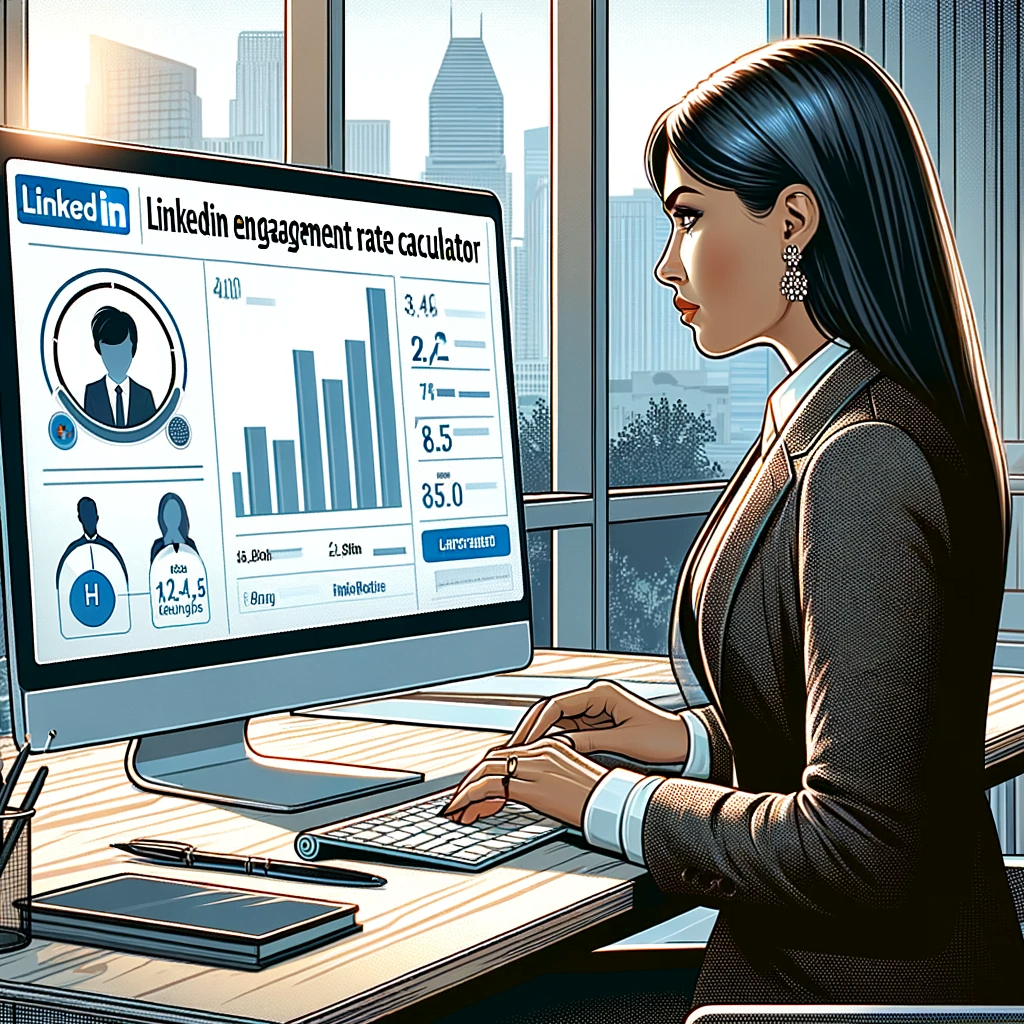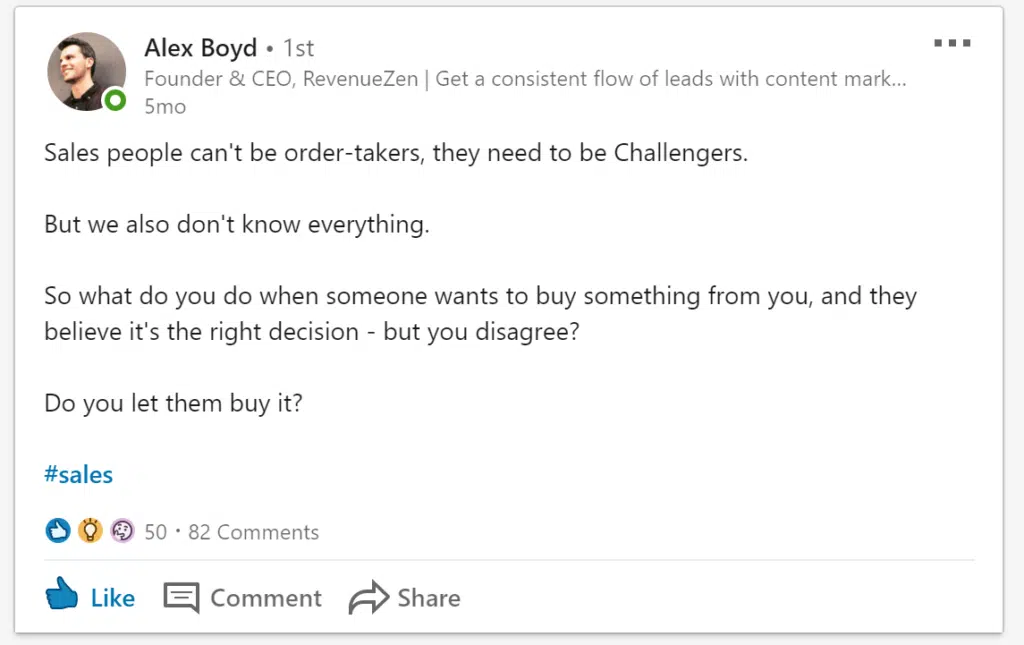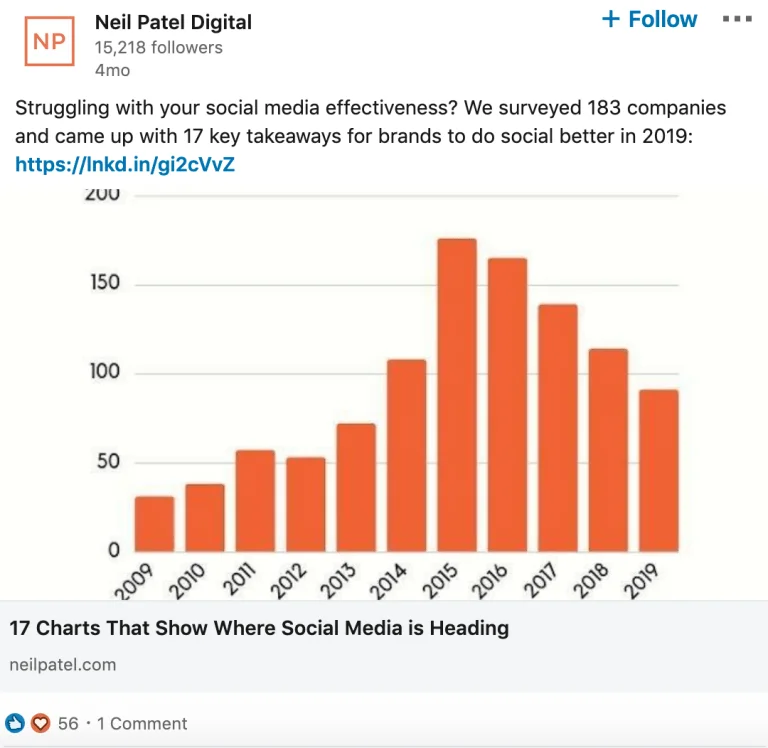Evaluate your LinkedIn performance using our LinkedIn Engagement Rate Calculator updated for 2024.
LinkedIn Engagement Rate Calculator
If you liked this calculator, you might like our new LinkedIn Ad Budget Calculator too.
Table of Contents
Introduction
In the world of social media, understanding how your content performs is crucial. LinkedIn, as a professional networking platform, is no different. With our handy tool which is based on LinkedIn engagement rate benchmark 2023 and forecasting reports for 2024 by industry, you will discover your performance. In this blog, we’ll explore what LinkedIn engagement rate is, why it matters, and how you can improve it.
What is LinkedIn Engagement Rate?
It is a metric that measures how actively your audience interacts with your content. It’s calculated based on the number of engagements (like reactions, comments, and shares) your content receives relative to your number of followers or impressions. Simply put, it shows how much your audience cares about and interacts with your posts.

Why LinkedIn Engagement is Important?
Engagement on LinkedIn is important for several reasons. It increases your visibility on the platform, as LinkedIn’s algorithm tends to favor content with higher engagement. This can lead to more connections and opportunities. Additionally, high engagement rates can establish you as a thought leader or an influential figure in your industry.
Average LinkedIn Engagement Rates by Industry
LinkedIn is a place where people from different jobs share information. How much people interact with these posts can be different for each job area. Here’s a list by HootSuite for how much people usually interact with posts in different job areas on LinkedIn:
- Agencies: 1.06%
- Education: 1.69%
- Entertainment and Media: 1.19%
- Financial Services: 1.58%
- Food and Beverage: 1.06%
- Government: 2.08%
- Healthcare and Wellness: 1.49%
- Nonprofit: 2.05%
- Real Estate: 1.56%
- Retail: 1.21%
- Professional Services and Consulting: 1.43%
- Technology: 1.53%
- Travel, Hospitality, and Leisure: 1.39%
These numbers tell us how often people like, comment, or share posts in different types of jobs on LinkedIn. It’s good to know this if you’re planning what to post.
What is a Good LinkedIn Engagement Rate?
A ‘good’ LinkedIn engagement rate can vary depending on your industry and audience size. Generally, a rate of around 1.5% is considered decent. However, for smaller pages, a higher rate is common, while larger pages might see lower rates but with larger overall engagement numbers.
What Can Be Done to Increase the Engagement Rate?
Improving your LinkedIn engagement rate isn’t too hard if you follow these tips:
- Post Regularly: Consistency is key. Regular posts keep you visible and relevant.
- Quality Content: Share valuable, interesting, and relevant content that resonates with your audience.
- Engage with Others: Respond to comments on your posts and engage with other users’ content.
- Use Rich Media: Images and videos often see higher engagement than text-only posts.
- Time It Right: Post when your audience is most active. This can vary, so test different times.
What Type of LinkedIn Content does the best Job?
Engaging your audience on LinkedIn involves choosing the right type of content. Each content type serves a different purpose and has its own way of connecting with your network. Let’s explore the various content types you can use on LinkedIn and how they can enhance your engagement.
- Articles: Articles on LinkedIn are an excellent medium for sharing in-depth knowledge and professional insights. They allow you to delve deeply into topics, showcasing your expertise and providing valuable content to your audience. You may have a look at here to learn more about how to form a long post on LinkedIn.
- Pros: Establishes thought leadership; encourages deep engagement through comments and shares.
- Cons: Requires more time to write and read; may not capture the interest of users seeking quick information.
- Best For: Demonstrating industry knowledge and building a reputation as a subject matter expert.
- Short Posts: Short posts are the bread and butter of LinkedIn engagement. These are concise, straight-to-the-point updates, questions, or thoughts, usually spanning just a few sentences.
- Pros: Quick to read and write; encourages more immediate and frequent interactions.
- Cons: Less suited for complex topics; limited space for detailed explanations.
- Best For: Sharing quick insights, industry news, or prompting discussions.

- Images and Infographics: Images and infographics add a visual element to your LinkedIn content strategy.
- Pros: High visibility in feeds; effective for simplifying complex data or concepts.
- Cons: Requires good design skills; may not convey as much detail as text.
- Best For: Summarizing information, showcasing data, or enhancing text posts.

- Videos: Videos have become increasingly popular on LinkedIn, offering a dynamic and engaging way to share content. Whether it’s recorded clips or live broadcasts, videos allow you to convey personality, share stories, and demonstrate products or services in a way that text cannot.
- Pros: Highly engaging; can convey personality and emotion more effectively than text.
- Cons: Often requires more time and resources to produce; may be less accessible to viewers in quiet environments or with limited bandwidth.
- Best For: Telling stories, demonstrating products or services, and creating a personal connection.

- Shared External Content: Sharing external content is about curating and sharing relevant articles, blog posts, and other resources from outside LinkedIn.
- Pros: Provides value to your network; positions you as a knowledgeable curator in your field.
- Cons: Redirects users away from your profile; less control over the content.
- Best For: Keeping your network informed about industry trends and news, and fostering discussions on current topics.
What about LinkedIn Ads to increase your Audience?
If you’re investing in LinkedIn ads, it’s crucial to understand your budget. That’s where our LinkedIn Ad Budget Calculator comes in handy. This easy-to-use tool will help you plan your ad spend effectively. Give it a try!
FAQ
How often should I post on LinkedIn?
Aim for 1-2 quality posts per week to start. Quality over quantity is important.
Does sharing articles count towards engagement?
Yes, sharing relevant articles can spark conversations and increase engagement.
Is it okay to repost old content?
Yes, as long as it’s still relevant and valuable. Sometimes content can get more attention the second time around.
Conlusion
LinkedIn engagement rate is a valuable metric that helps you understand how your content is resonating with your audience. By focusing on quality content, regular engagement, and strategic posting, you can increase your LinkedIn engagement rate. Remember, social media is about building relationships. Be authentic, helpful, and consistent, and your LinkedIn engagement is bound to grow.

